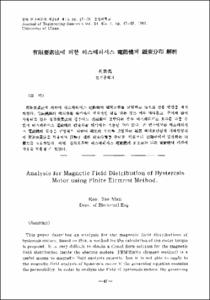Entry Mode Selection by Korean FDI Firms
- Alternative Title
- 海外直接投資 企業의 進入戰略 選擇에 관한 硏究
- Abstract
- 본 연구에서는 한국기업들의 해외직접투자시 진입전략의 선택은 신규자원의 확보동기 및 핵심자원의 공개의지에 따라 다를 것이라는 가정하에 출발하였고, 보다 구체적으로는 해외시장 진입전략의 선택에 관한 신이론의 틀을 이용하여 한국기업의 해외시장 진입전략 선택에 관한 세가지 가설을 36개 해외직접투자 기업을 대상으로 설문조사한 자료를 이용하여 검증하였다. 교차분석법에 의한 실증분석 결과 신규자원 확보동기의 유무가 해외시장 진입방식의 선택과 무관하지 않은 것으로 나타났으며, 신규자원의 확보 동기가 있는 경우에는 합작투자 또는 기존 기업 인수방식을 택하는 경우가 많고, 신규자원의 확보 동기가 없는 경우에는 신규설립방식을 선호하는 것으로 나타났다. 또한 새로운 자원의 확보 동기가 ?獵? 기업집단을 대상으로 한 교차분석 결과에 의하면 이미 축적해 놓은 핵심자원의 공개 의지가 없는 기업들은 인수방식에 의한 단독투자를 선호하는 것으로 나타났고, 핵심자원에 대한 공개 의지가 있는 기업들은 합작투자를 선호하는 것으로 나타났다.
This research was started with the assumption that the entry mode selection by the FDI firms from developing countries will differ from those of the firms from developed countries. Two hypotheses concerning the entry mode selection were empirically tested by using the data collected from 36 subsidiaries of Korean parents.
According to the test result, the firms that have the motivation to acquire new resources through foreign direct investment were seem to prefer joint-venture or acquisition mode, and the firms that do not have the motivation to acquire new resources through foreign direct investment seem to prefer new venture mode. Further analysis using the data set comprised of the firms with the motivation to acquire new resources through FDI showed that the firms with no willingness to expose their core resources preferred acquisition mode, and firms with the willingness to expose their core resources preferred joint-venture mode.
This research was started with the assumption that the entry mode selection by the FDI firms from developing countries will differ from those of the firms from developed countries. Two hypotheses concerning the entry mode selection were empirically tested by using the data collected from 36 subsidiaries of Korean parents.
According to the test result, the firms that have the motivation to acquire new resources through foreign direct investment were seem to prefer joint-venture or acquisition mode, and the firms that do not have the motivation to acquire new resources through foreign direct investment seem to prefer new venture mode. Further analysis using the data set comprised of the firms with the motivation to acquire new resources through FDI showed that the firms with no willingness to expose their core resources preferred acquisition mode, and firms with the willingness to expose their core resources preferred joint-venture mode.
- Issued Date
- 1998
- Type
- Research Laboratory
- Alternative Author(s)
- 許永道
- Publisher
- 경영학연구논문집
- Language
- eng
- Rights
- 울산대학교 저작물은 저작권에 의해 보호받습니다.
- Citation Volume
- 5
- Citation Number
- 2
- Citation Start Page
- 137
- Citation End Page
- 145
- Appears in Collections:
- Research Laboratory > Journal of management
- 파일 목록
-
-
Download
 000002024582.pdf
기타 데이터 / 382.41 kB / Adobe PDF
000002024582.pdf
기타 데이터 / 382.41 kB / Adobe PDF
-
Items in Repository are protected by copyright, with all rights reserved, unless otherwise indicated.